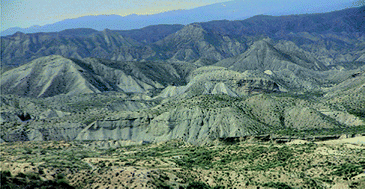We have carried out analyses on three extremophile lichens from the Tabernas Desert (Spain) under different experimental conditions: dry and wet samples in the laboratory and wet specimens in the field, using three spectrometers: one portable, one FT-Raman and one dispersive micro-Raman instruments. Apart from pigment characterization, the information obtained from the spectra is compared and the differences analysed. The fact that no results were achieved on dry lichens using the handheld spectrometer is of special relevance for those looking for life in hazardous environments. Since in some extreme habitats, life could be “dormant” and only activates under appropriate conditions, miniaturized instruments (such as those included for extraplanetary exploration missions) could not detect bio-markers and, then, life signals will not be noticed when, actually, life is there. Furthermore, we show in this work, using the miniaturized Raman spectrometer, that not only laser wavelength, spectral resolution and wavenumber region of the spectrum are important for the bio- or geo-marker recognition but also spot-size is of vital relevance for the unambiguous biomolecular characterization. In our opinion, mini-Raman instruments are useful for assessing in situ the eventual presence of bio-markers in complex natural samples, such as organisms, but are not accurate enough for precise molecular identification.


 Please wait while we load your content...
Please wait while we load your content...